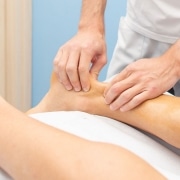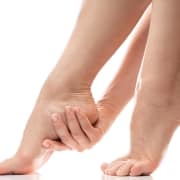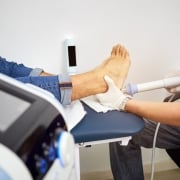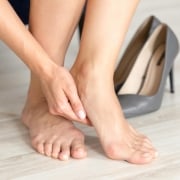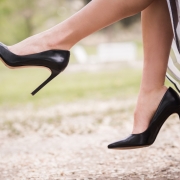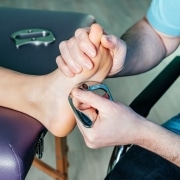Is Plantar Fasciitis Keeping You Off Your Feet? We Can Help
Plantar fasciitis in Austin TX is a common problem that causes significant heel pain. The pain feels especially pronounced upon standing up and taking the first few steps. The term plantar fasciitis comes from the fact that tissues in the foot known as plantar fascia become inflamed. These tissues are responsible for foot movement and help you walk properly. Dr. Jeffrey Lamour offers several remedies for plantar fasciitis that can have you up on your feet and moving comfortably in no time.
What is Plantar Fasciitis?
Plantar fasciitis is the leading cause of heel pain among people of all ages. The plantar fascia is a thick band of fibrous tissues along the sole of your foot. The tissues of the plantar fascia attach themselves to the base of your toes and your heel bone. Inflammation of the plantar fascia causes pain that typically leads to a diagnosis of plantar fasciitis.
The plantar fascia supports the arch of your foot and makes it possible for you to walk. Over time, the band of fibrous tissues can wear down due to aging, being overweight, and several other factors. Irritation results when the plantar fascia loses its elasticity.
Common Causes of Plantar Fasciitis
We already mentioned that aging and being overweight can cause the symptoms of plantar fasciitis. Other common reasons that people develop this condition include:
- Increased activity level, such as when you start a new exercise program
- Medical conditions like rheumatoid arthritis or lupus
- Standing, walking, or running on hard surfaces for many hours every day
- Type of shoes you wear
- Unusual shape or structure of your foot
Heel pain upon standing or taking the first steps is the most typical symptom associated with plantar fasciitis. The pain sometimes lessens as you keep walking, but not always. The more you weigh and the less supportive shoes you wear, the more likely it is your heel pain will continue.
Plantar Fasciitis Treatment Options
Every patient experiences plantar fasciitis in Pflugerville TX differently. Some respond well to prescription medications, while others benefit from shockwave or platelet-rich plasma therapy. We invite you to reach out to our podiatry practice in Austin or Pflugerville to request an exam today.



